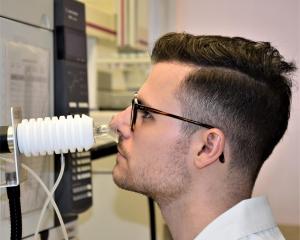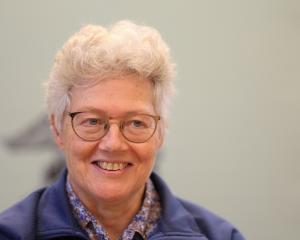
Assoc Prof Anna Garden, a computational chemist at the Department of Chemistry, University of Otago and deputy director outreach and education at the MacDiarmid Institute for Advanced Materials and Nanotechnology, describes the achievements of the Nobel Laureates.
Imagine you held a shiny gold bar in your hand. Now imagine holding a gold coin. Although quite a bit smaller (and cheaper!) than the gold bar, it would still be the same characteristic gold colour. However, if you were to decrease its size further, down to nanometre scale (about 100,000 times smaller than the width of a human hair), it would cease to be gold coloured any more but would be purple. Make it a little smaller still and it would appear red. The emergence of different properties of materials when the size is so small defines the fields of nanoscience and nanotechnology and forms the basis of the 2023 Nobel Prize in Chemistry.
Quantum dots specifically refer to nanoparticles made of semiconducting materials. Semiconductors are found everywhere in electrical and optical devices such as integrated circuits and LEDs. Quantum dot displays are used in QLED televisions to produce light of a very specific colour, rather than having to pass white light through colour filters. This gives crisper, truer colours. Quantum dots are also used in medical imaging, their nanoscale size leading them to emit brighter than traditional diagnostic fluorescent dyes. They may play a role in future technologies, such as thinner solar cells.
As the name suggests, the reasons for the unique properties of quantum dots lies in quantum mechanics — the laws of physics that govern very small particles. In quantum mechanics, things that we think of as particles, such as electrons, also act like waves. When an electron is confined in a small piece of material, this essentially restricts the wavelength of the particle. This is much like making waves in a paddling pool compared to the ocean — waves made in the paddling pool will necessarily be much closer together than long, rolling ocean waves. The restriction on the electron’s wavelength, in turn, affects its energies and properties, such how they interact with light, giving rise to the uniquely coloured nanogold.
The quantum properties of nanomaterials were predicted to exist as early as the 1930s but not observed until much later. This was the contribution to the prize by Bawendi and Brus, who were able to observe and explain the quantum effects. The contribution of Ekimov was to develop a cheap synthesis method for quantum dots with highly controlled sizes, which is crucial for widespread utilisation of nanomaterials. Interesting properties only become useful when they can be controlled.
Ask a question
- Send questions to: Ask-A-Scientist, PO Box 517, Dunedin 9016
- Email question.aas@gmail.com










